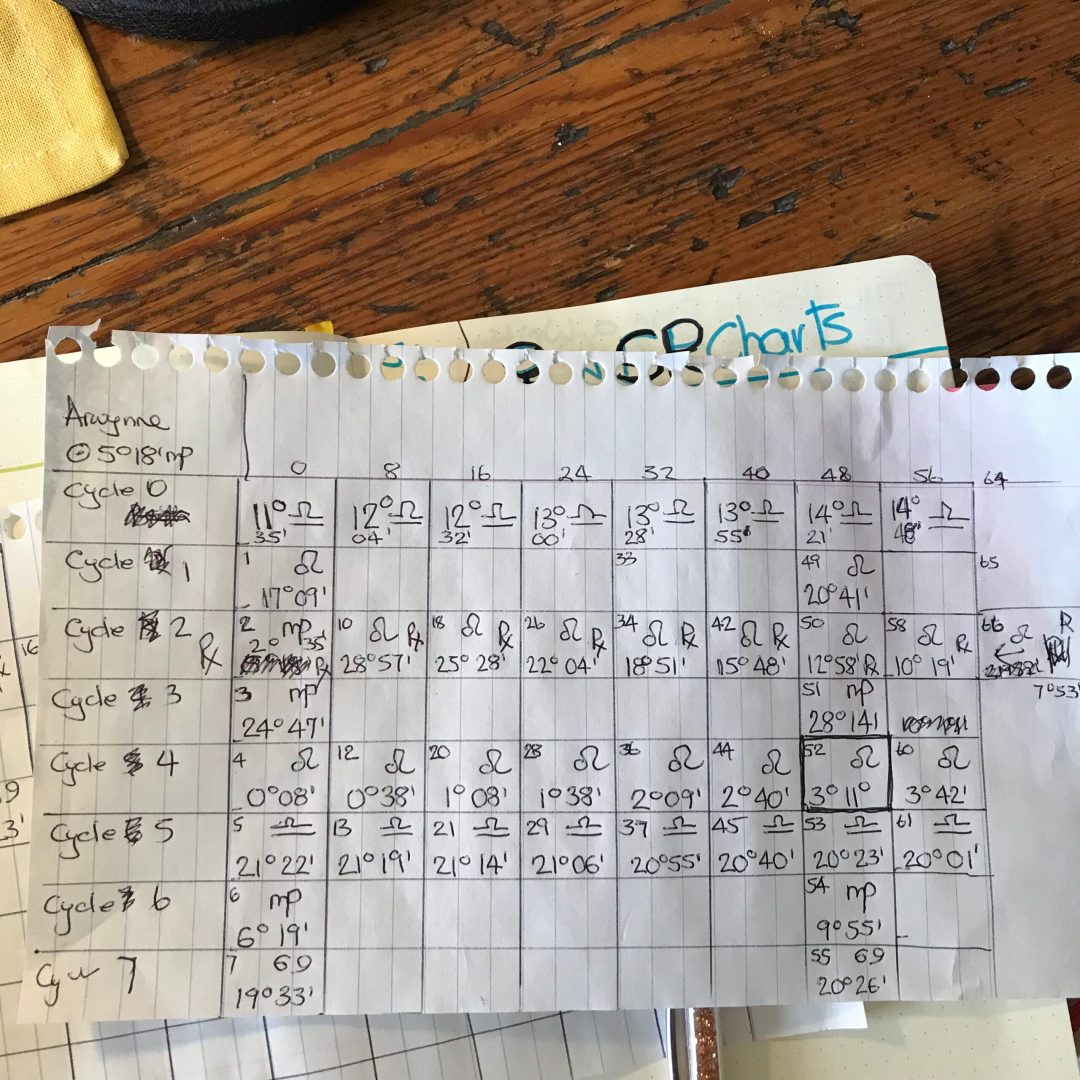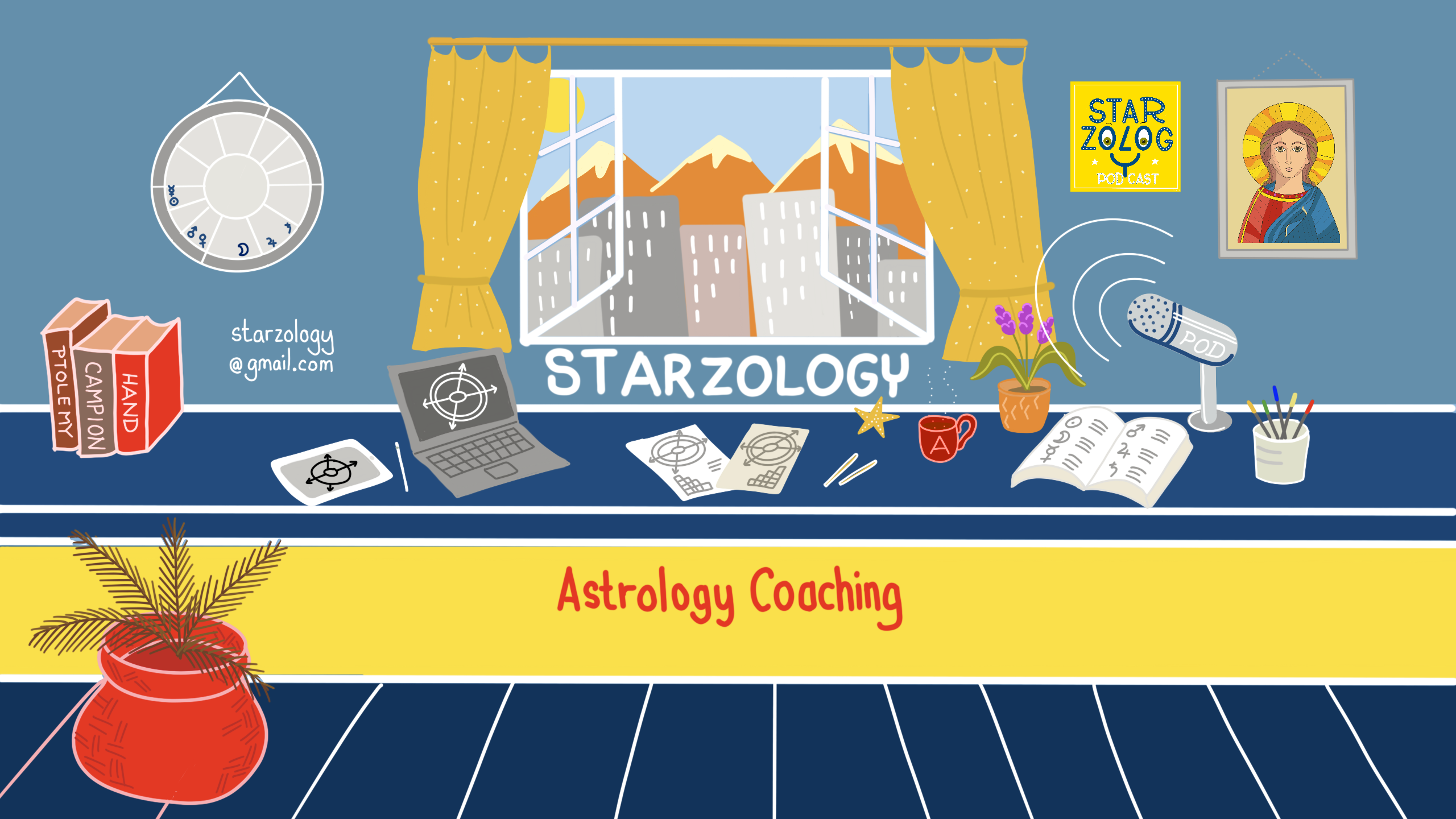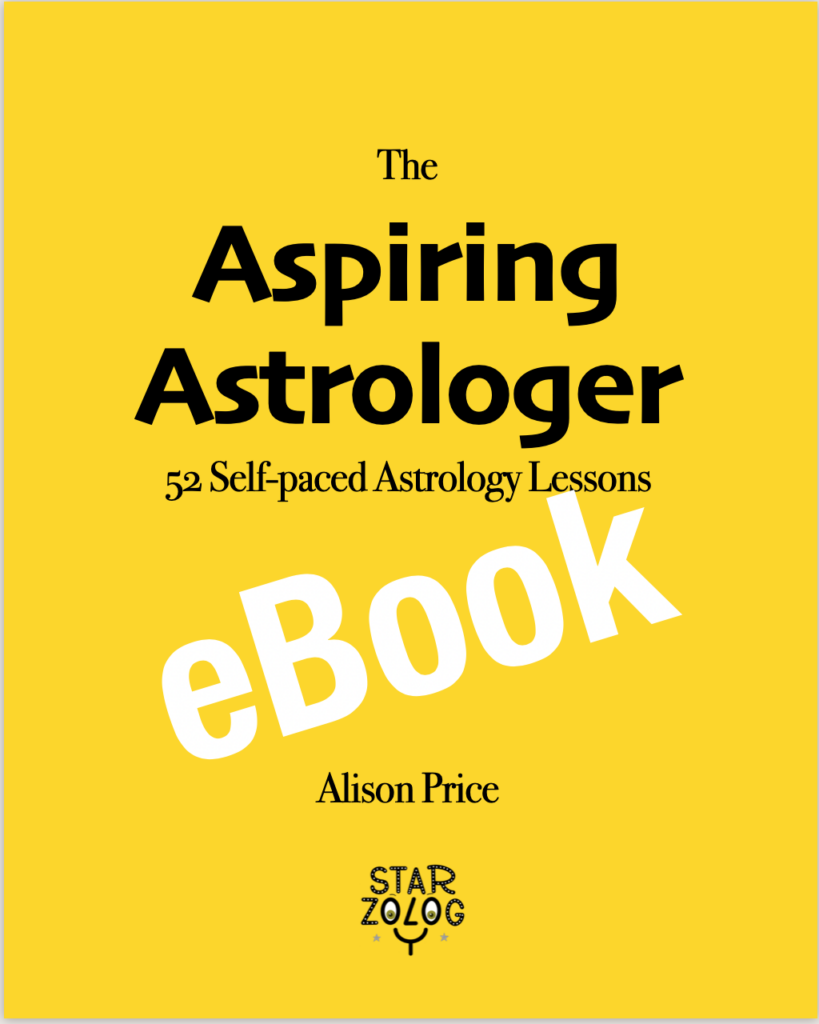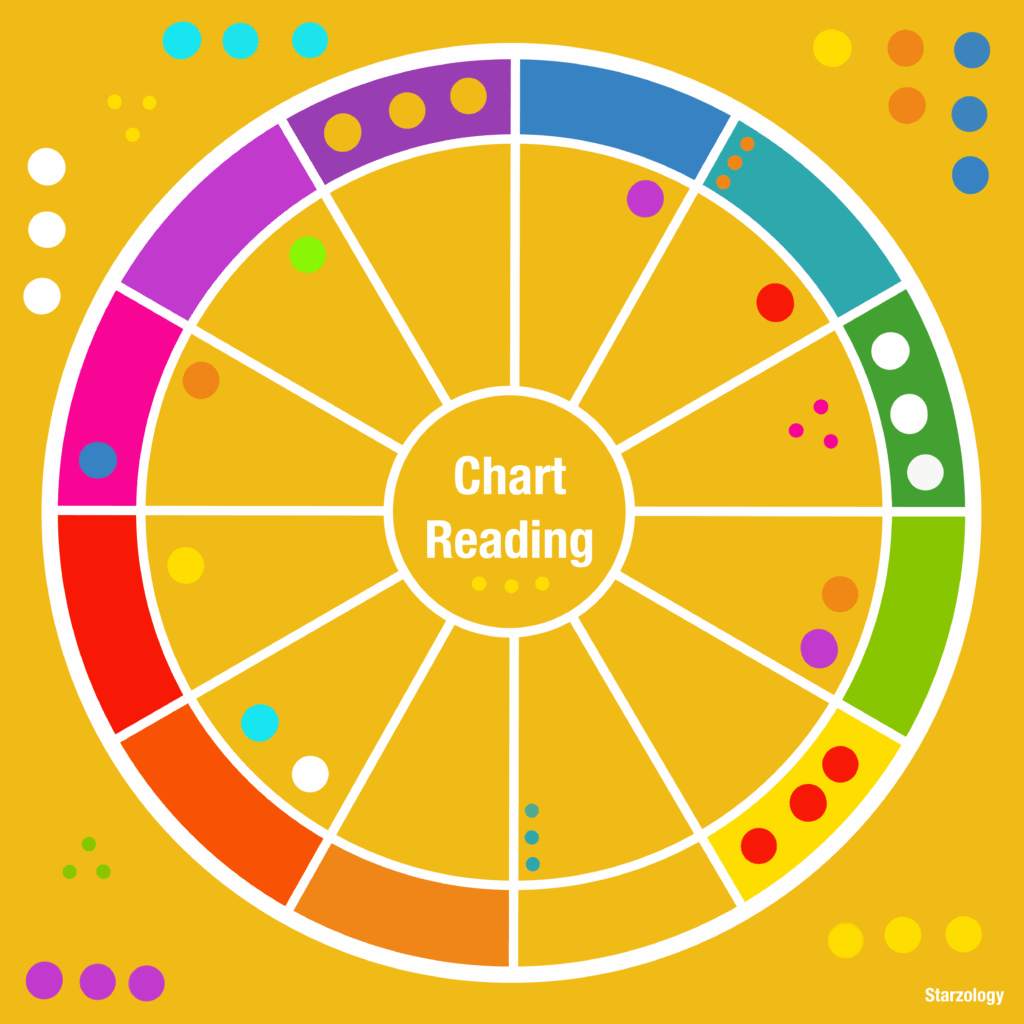Our original Starzology horoscopes are crafted from the positions of celestial bodies. We focus on ingresses, lunations and stations.

Venus in Solar Return Charts
Author: Alison Price – Published: July 2025
Venus in your Solar Return Chart
Patterns In Astrology
Cycles and Patterns
We astrologers love a good pattern. The cycles of the planets:
- The Earth takes one year to orbit the Sun.
- The Moon takes one month to orbit the Earth.
- And the Earth spins on its axis once in 24-hours. Or a day.
The patterns are pretty stable and we can count in them.
Fibonacci
The golden ratio or the Fibonacci pattern is created by the numbers being added to for the next number in a sequence.
1, 1, 2, 3, 5, 8, 13, 21…
The Fibonacci pattern in nature is found in many animal and plant species.
Plants
Sunflower heads have the distinct pattern of how the seeds are laid out so they spiral out from the center. It appears that this is the best way to cram as many seeds into a circle (the head of the flower) as possible and it is thought that this is why nature does it.
Pineapples
In pineapples their eye seeds spiral up in 13 rows one way and 21 rows the other. One spiral being clockwise and the other spiral anticlockwise, but both are Fibonacci.
Animals
Found in the nautilus shell. The nautilus is a mollusk that lives in the ocean. It grows like many shells in a whirl ever expanding. The chambers of the nautilus are bigger each time. Fibonacci spirals can be found in other shells as well. The point is that the Fibonacci sequence contains the numbers 5 and 8 and these are specifically related to Venus.
Venus Retrograde Patterns
Retrograde 5 in 8 years
The planet Venus describes a pattern that looks like a flower by its retrograde cycle. This pattern is known as the Venus rose. There are five petals in the Venus rose and this is why Venus specifically rules all 5-petaled flowers.

Venus in your Solar Return
Every Year
When you calculate your Solar Return chart, you do it for every year on or near your birthday. The Sun in a solar return chart is always in the exact position as in your natal chart for every Solar return. It is the exact position that makes the Solar Return chart, but the other planets can be in other positions. Now we are going to look at the Venus position in your Solar Return charts. In the subsequent years Venus will be in a different position in each chart.
Eight Venus Positions
Every year after you are born Venus will be in a different position. When you get to age 8, your eighth birthday, Venus is very near your natal Venus position (within one degree). Eight years later, Venus is still within one degree of the previous eight-year position. In fact, from your natal chart, if you calculate your solar return for every 8 years, so at age 8, 16, 24, 32, 40 etc. Venus will infinitesimally move from its natal position and painstakingly slowly creep through the zodiac.
Eight Year Groups
This occurs for every group of eight years. For example, the years you turn 5, 13, 21, 29, 37, 45 etc. will have Venus at a different position to the natal, but a similar position for this set (your 5th cycle) of 8-year cycles.
Starting Positions
There are only eight starting positions that Venus can be in your Solar return chart. Every eight years the pattern repeats. The Venus position is not as exact as the Solar return Sun is, but it is within one degree from eight years ago of direct. Venus’ solar return position slowly slips over the course of your life. This means that there are eight distinct positions which you can monitor.
Venus Signs
Distance
Venus can only be up to 48° from the Sun. This means that Venus will be only one or two signs ahead of, or behind, the Sun. If Venus is in Virgo in your Natal chart, then in your Solar Return chart, it can only be in Cancer, Leo, Virgo, Libra or Scorpio. This means that Solar Return Venus can only be in the five signs near its natal position.
Sun Position
It depends on your Sun degree position. If the Sun is early in its sign before 5° or further in the sign, past 25°, there can only be 4 signs that Venus can be placed in solar return charts. It seems that if your Sun is in the middle of the sign at say, 15°, there may be five signs in which Venus can be placed. Your natal Venus position will be repeated (but slightly slipped) in your Solar return charts at age 0, 8, 16, 24, 36, 44, 52, 64, 72, 80, 88, and 96.
In your 8-year Venus Solar return cycle placements you may frequently have:
- The natal Venus starting position
- 3 Venus retrograde positions
- 4 Venus ahead of the Sun positions
- 4 Venus behind the Sun positions
What this really means is that Venus has a cycle that repeats every 8 years with a little drift.
The other planets do not.
Solar Returns Charts
You do not have to remain in the same place for these patterns to be expressed.
Example
This image is of the first draft for Arwynne’s Venus in Solar Return chart table.
Scroll down below to download your free worksheet.

Venus Return Charts
Love and Money
Of course, if you are truly looking into the Venus profile in your chart regarding love and money, you would cast the Venus return chart itself. This makes more sense. But what we are taking about are the 8 placements found in Venus’ position in subsequent 8 yearly solar return charts.
In a way it’s crazy that this occurs. That the Fibonacci 5-8 that shows up in Venus retrograde motion, is also reflected in the eight solar return starting positions for Venus. And really, it’s not the solar return that triggers this, but rather it is the precise movement of Venus.
Other SR Planets
Repeating Placements
Only the three planets, the Sun, the Moon and Venus have a repeating pattern in Solar Return charts. All the other planets can be absolutely anywhere in the chart. There is no pattern in the solar return charts for Mercury, Mars, Jupiter, Saturn, Uranus, Neptune and Pluto.
Overarch
Hidden Patterns
As I said before, as an astrologer I like to see patterns. I find the fact that we only have 8-cycles of Venus in Solar Return charts something interesting that can be followed through and therefore predicted.
Do Your Research
As I said in the podcast, I urge all aspiring astrologers to find what interests them within astrology, which is of course our subject. Find the specific topic that interests you and do some research, dig deeper, explore more and become the expert in the tightest niche possible within astrology itself. Most of the astrology books on my shelf were written 2000 years ago or in the last century. We need these books to learn astrology, but just because things were done one way in the past doesn’t mean that there’s not something new to be discovered.
Davison
I like to reference the Davidson chart readings, which he only discovered in the 1960s, which is a brilliant technique that now every astrology is using. I think every astrologer has something to offer and if you do some research or explore your topic thoroughly you could very easily bring a whole new technique to astrology and to the astrology field in general.
Ready Already?
And perhaps you’re already doing this. Perhaps you are already exploring one particular thing within astrology. It doesn’t have to be complete, and it doesn’t have to be finalized because that’s the nature of research. But if this sounds like you and you’ve got something that you’ve been looking into, I’d love to hear from you and I’d love to get you on my podcast.
If you would be interested, you can read more about being a good podcast guest here. And when you’re ready you can pitch your topic.
Extend Yourself
Forecast
In your astrology journal and using your natal and no doubt multiple solar return charts please do the following:
- Note your natal Sun position sign and degree.
- List your 8-cycle (0 to 7) Venus solar return starting positions sign and degree.
- Note which cycle (0 to 7) will your next Solar Return be.
- Anticipate your next Solar Return Venus position to within one degree.
Extend Yourself Further
Retrospectively
In your astrology journal and using your natal and no doubt multiple solar return charts please do the following:
- Cast you next Solar Return. Now reflect backwards to eight years ago and comment on what your life looked like regarding love and money back then? Do you see a pattern?
- If you are married or in a serious long-term relationship, find the Venus Solar Return cycle (from 0 to 7 years). Note Venus’ position. Now, consider just how your relationship has developed each eight years (in the 0 – 7 cycle) after your marriage or when you started co-habiting.
- If you have ever filed for bankruptcy, find the Venus Solar Return cycle (from 0 to 7 years). Note Venus’ position. Now, consider just how your finances have fared for each eight years (in the 0 – 7 cycle) after your monetary crisis.

Book Recommendations
Here are some books which may interest you.
- The Light of Venus by Adam Gainsburg
- Venus Her Cycles Symbols and Myths by Anne Massey
- Venus Signs by Jessica Shepherd
- Planets in Solar Returns by Mary Fortier Shea
- The Art of Forecasting using Solar Returns by Anthony Louis

More Venus Topics
Here are a few more Venus related topics you may like.
⠀
- More on VENUS
- More on VENUS RETROGRADE
- More on The Part of Marriage
- More on VENUS in the HOUSES
Author Bio
Alison Price: Professional Astrologer
Alison helps you uncover your individual creativity and lead a fulfilling life using your own astrology. She shares her wisdom from the heart with a touch of humor. She offers Consultations for everyone and Coaching for Aspiring Astrologers.
If you’d like to get in touch with Alison, you can reach out to her via email at starzology@gmail.com.
More Articles
If you enjoyed this post, you may like some more astrology related articles from our blog.

This Month’s Horoscope Overview
The Starzology monthly horoscope overview provides all the ingresses, stations and lunations for each month with a short interpretation.

Venus in Solar Return Charts
In astrology, explore the 8-cycle pattern of VENUS in your SOLAR RETURN chart and the background pattern of Venus’ placements in your life.

Starzlife Free Newsletter
Welcome to “The Starzologer” ideas, insights and inspiration for creative, artistic
astrologers to keep the astro conversation going.
























